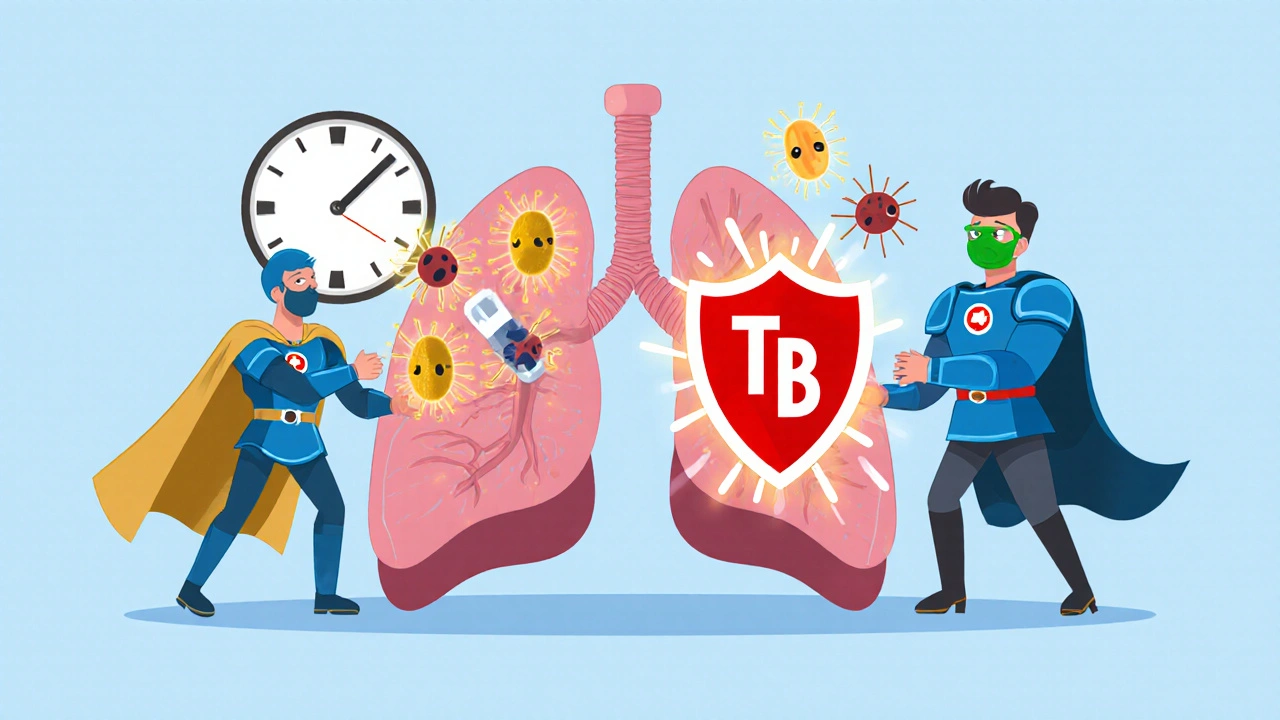When it comes to fighting tuberculosis drugs, medications used to kill the bacteria that cause TB, a serious lung infection that can spread through the air. Also known as anti-TB medications, these drugs aren’t just any pills—you take them for months, not days, and mixing them wrong can lead to drug-resistant TB, which is far harder to treat. TB isn’t gone. It’s still one of the top 10 causes of death worldwide, and the right combination of drugs makes all the difference.
There are four main first-line tuberculosis drugs, the standard set used in nearly all initial TB treatments. These include isoniazid, rifampin, pyrazinamide, and ethambutol. They’re never used alone. Doctors always combine them, usually for at least six months. Why? Because TB bacteria can adapt fast. Take just one drug, and you might kill the weak ones—but the strong ones survive, multiply, and turn into drug-resistant TB. That’s why the combo works: it hits the bug from every angle. Isoniazid and rifampin are the backbone of treatment. Pyrazinamide works best in the early weeks, and ethambutol helps block resistance until the others kick in. Missing doses or stopping early? That’s how resistant strains spread. The WHO calls this one of the biggest public health threats today.
Side effects are real, but manageable. Isoniazid can hurt your liver or cause nerve tingling. Rifampin turns your pee orange—scary at first, but harmless. Pyrazinamide may trigger joint pain. Ethambutol can affect vision, so regular eye checks are needed. If you’re on these drugs, you’ll likely get blood tests every few weeks. It’s not just a formality—it’s how your doctor knows if your liver is handling the load. And if you’ve had TB before, or came from a place with high drug resistance, your doctor might skip the standard combo and start with second-line drugs like fluoroquinolones or bedaquiline, stronger, more expensive options used when first-line drugs fail. These aren’t used upfront because they’re harsher and cost more, but they’re lifesavers when resistance shows up.
You’ll find posts here that break down how these drugs compare, what to do if you miss a dose, how long treatment really takes, and why some people need to take pills for nine months instead of six. There are guides on spotting early signs of liver damage, what to eat while on treatment, and how to stay on track when the meds feel endless. This isn’t theory—it’s what works in clinics and homes around the world. Whether you’re a patient, a caregiver, or just trying to understand why TB treatment is so long, the articles below give you the straight facts without the jargon.

Isoniazid has long been the standard for TB treatment, but safer, shorter alternatives like rifampin and rifapentine are now preferred. Learn which options work best for active and latent TB-and when to avoid isoniazid.
read more